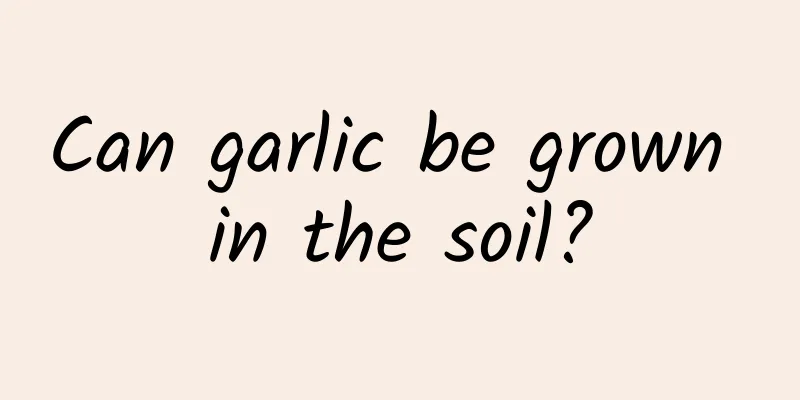What fertilizers are needed for citrus growth (scientific fertilization period and plan for oranges throughout the year)

|
Citrus is a fruit that requires a relatively large amount of fertilizer. It can be said that the fertilization of citrus is directly related to the growth of the tree and the yield in autumn. Therefore, from base fertilizer to topdressing at various times, it is necessary to do it well, otherwise there may be a reduction in production, alternate years, etc. When is the best time to fertilize citrus?In fact, every fertilization period of citrus is very important. If you have to choose the most important one, it is the application of base fertilizer for citrus. Because it is related to the root growth and flower bud differentiation of citrus, it is a relatively important fertilization every year. The time for applying citrus base fertilizer is after the picking period and before the citrus trees shed their leaves. Base fertilizer can be applied during this period. Of course, the earlier the better. Because as the temperature drops, the citrus trees' ability to absorb fertilizer decreases and the efficiency of fertilization also decreases. Fertilization plan for citrus at different times of the year1. Spring fertilizerCitrus is facing growth conditions such as flowering and spring shoots in spring. The quality of its spring shoots and flowering is directly related to the citrus yield of that year. The time for spring fertilizer application should be about 1-2 weeks before the spring shoots turn green and the flower buds germinate . If it is applied too early, not only will the fertilizer be difficult to absorb, but once the spring rain comes, it will also cause fertilizer loss. If spring fertilizer is applied too late, citrus trees will not get nutrients in time, which will affect the growth and flowering effects. The application of spring fertilizer should be mainly nitrogen fertilizer, and combined with organic fertilizer, magnesium calcium and potassium fertilizer . The amount of nitrogen fertilizer applied should be 40% of the total nitrogen applied, while the amount of potassium fertilizer applied should be 20% of the total amount applied. The amount of calcium fertilizer applied can be 60-80kg/667m2 of lime. 2. Fruit-enhancing fertilizerFrom July to September, citrus fruits will expand rapidly . At this time, the citrus trees will enter a period of physiological differentiation between their autumn shoots and flower buds. In order to achieve the purpose of "forcing shoots" and promote flower bud differentiation, fruit-enhancing fertilizers should include nitrogen fertilizers and potassium fertilizers. During the fertilization process, nitrogen fertilizers should account for 30% of the total amount applied, while potassium fertilizers should account for 45% of the total amount applied. At the same time, the application ratio of potassium fertilizer should be increased to promote the rapid expansion of citrus fruits, achieve the purpose of "forcing shoots", and accelerate the physiological differentiation of flower buds. It is recommended to use Stanley's macro-element balanced water-soluble fertilizer (nitrate-sulfur based or pure sulfur based) during the young fruit stage, and Stanley's macro-element high-potassium water-soluble fertilizer (pure sulfur based) during the swelling stage. Both should be diluted 800-1000 times for spraying or drip irrigation. After applying fruit-enhancing fertilizer, if drought occurs and lasts for a long time, water should be replenished in time. Sprinkler irrigation and drip irrigation can be used to absorb fertilizer nutrients in time and achieve the goal of high yield. 3. Winter fertilizerThe flowering and fruiting process of citrus consumes a lot of water and nutrients. The application of winter fertilizer can not only restore the tree vigor and differentiate flower buds, but also enrich the mother branches and resist the cold and overwinter. Winter fertilizer should be applied from October to December. For early-maturing varieties, winter fertilizer should be applied after picking the fruit. For late-maturing varieties, winter fertilizer should be applied within a week before picking. At the same time, in order to avoid the "return to green" of citrus fruits, early fertilizer application should be preferred . Winter fertilizers should include phosphorus fertilizer, organic fertilizer, nitrogen fertilizer, potassium fertilizer, etc., with phosphorus fertilizer and organic fertilizer as the main ones. The application rate of organic fertilizer is 1500~2000kg per mu. The application amount of phosphorus fertilizer and potash fertilizer should be 35% of the total amount. The application amount of nitrogen fertilizer should be 30% of the total amount. It is recommended that products such as Stanley Pure Sulfur 17-17-17 and Stanley Soybean 50 be used as nitrogen, phosphorus and potash fertilizers. 4. Foliar fertilizationFoliar fertilization is mainly used to protect flowers and fruits, supplement trace elements, etc. Boron deficiency : spray 0.1%~0.2% borax on the roots before the flower buds appear; Zinc deficiency : spray 0.2%~0.3% zinc sulfate before new shoots sprout; Magnesium deficiency : spray 0.2%~0.3% magnesium sulfate at the early stage of germination; Calcium deficiency : Apply lime 30-60 kg/mu once a year; Manganese deficiency : spray 0.2%~0.3% manganese sulfate during the budding period; Sulfur deficiency : Apply potassium sulfate to the soil or spray micro-fertilizers with high sulfur content on the leaves. Fertilization method for citrus1. Ring ditch application, strip ditch application and other methods can be adopted. The farmyard manure used must be fully fermented and decomposed, and chemical fertilizers should not be applied excessively at one time, but should be applied thinly and frequently. In addition, the main root layer of adult trees is distributed at a soil depth of 40 to 60 cm. Its main absorbing root is the root tip of the fibrous root - the new root part, which should be used as the basis when determining the depth and location of fertilization. 2. It will be carried out from November to December. The specific method is to apply fertilizer once every other year, stagger the fertilizer between plants, and dig radial, semi-circular or circular fertilizer trenches outward from the drip line of the crown. Be careful not to cut off large roots when digging. The amount of fertilizer should be increased or decreased according to the age of the tree and its growth. In combination with root pruning, weeds and green manure should be placed at the bottom of the ditch for each tree before applying base fertilizer, and then mixed thoroughly with the soil in the fertilization ditch. Fruit trees should be given additional potash fertilizers such as plant ash fertilizer and potassium sulfate to facilitate flowering and fruiting. 3. The amount of fertilizer to be applied. The annual fertilizer application is 0.6kg-0.8kg of pure nitrogen for every 100kg of fruit produced, and the ratio of nitrogen, phosphorus and potassium is preferably 1:0.4:1. Based on an output of 2,000 kg per mu, 12kg of pure nitrogen, 5kg of phosphorus and 12kg of potassium should be applied per mu. 【 Summarize 】 Citrus requires a large amount of fertilizer, but different fertilizers need to be selected according to different growth stages. Among them, the base fertilizer applied in autumn after the picking period is particularly important. Organic fertilizers, microbial agents, water-soluble fertilizers and other fertilizers can be used for fertilization and topdressing. |
Recommend
Why is the ball orchid not blooming?
1. Lack of light Reason: Hoya is a well-known sha...
Can bamboo cypress be hydroponically cultivated?
Can bamboo cypress be hydroponically cultivated? ...
The efficacy and function of hawthorn in weight loss
1. Weight loss and body shaping The acidic substa...
How much does it cost to invest in 2,000 bags of oyster mushrooms (investment cost and profit per acre of oyster mushroom greenhouse)
Is it profitable to grow oyster mushrooms? Oyster...
How to remedy azalea leaf loss
1. Malnutrition 1. Reason: Adequate nutrient supp...
How to grow bear's paw tree
Growth habit Bear's paw tree is suitable for ...
Can ginkgo fruit be eaten? How to eat it?
1. Introduction Ginkgo nut, commonly known as whi...
How to grow the dragon god wood fairy column
1. Suitable soil It can tolerate drought and cann...
What are the cultivation methods and precautions of Long Xuelan?
Long Xuelan Introduction Long Xuelan belongs to t...
Does the fortune tree like sunlight? Can it be exposed to the sun?
1. Do you like sunshine? It is a plant that prefe...
How to grow blue snowflakes
1. Temperature Temperature is very important for ...
The best time for growing pepper seedlings
Chili pepper is a vegetable with great market dem...
Where is the crabapple suitable for growing? What are its growth environment and characteristics?
Where do crabapple flowers grow? Begonia is suita...
Can nectarine pits be planted? How can nectarine pits be planted so that they can germinate?
The pits of nectarine can be planted, and the bes...
Do hydrangeas like acidic soil?
1. Do you like it? Hydrangea likes acidic soil. I...









